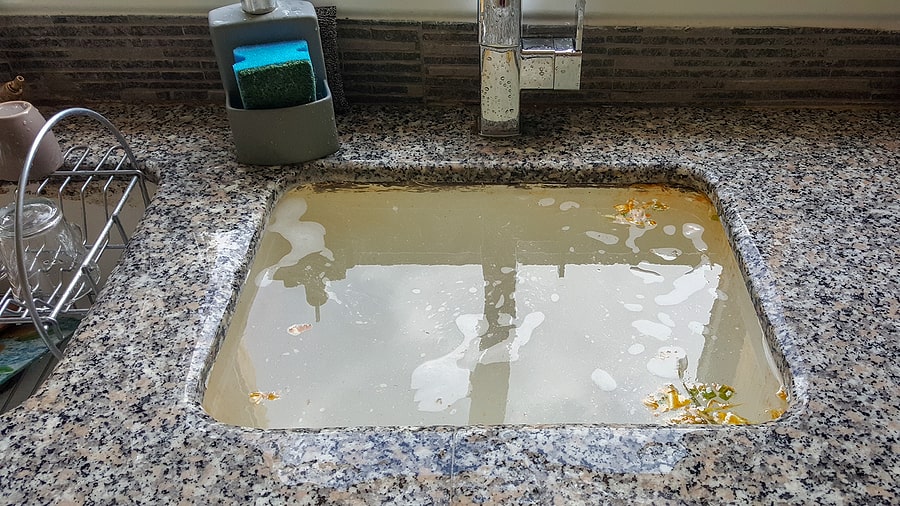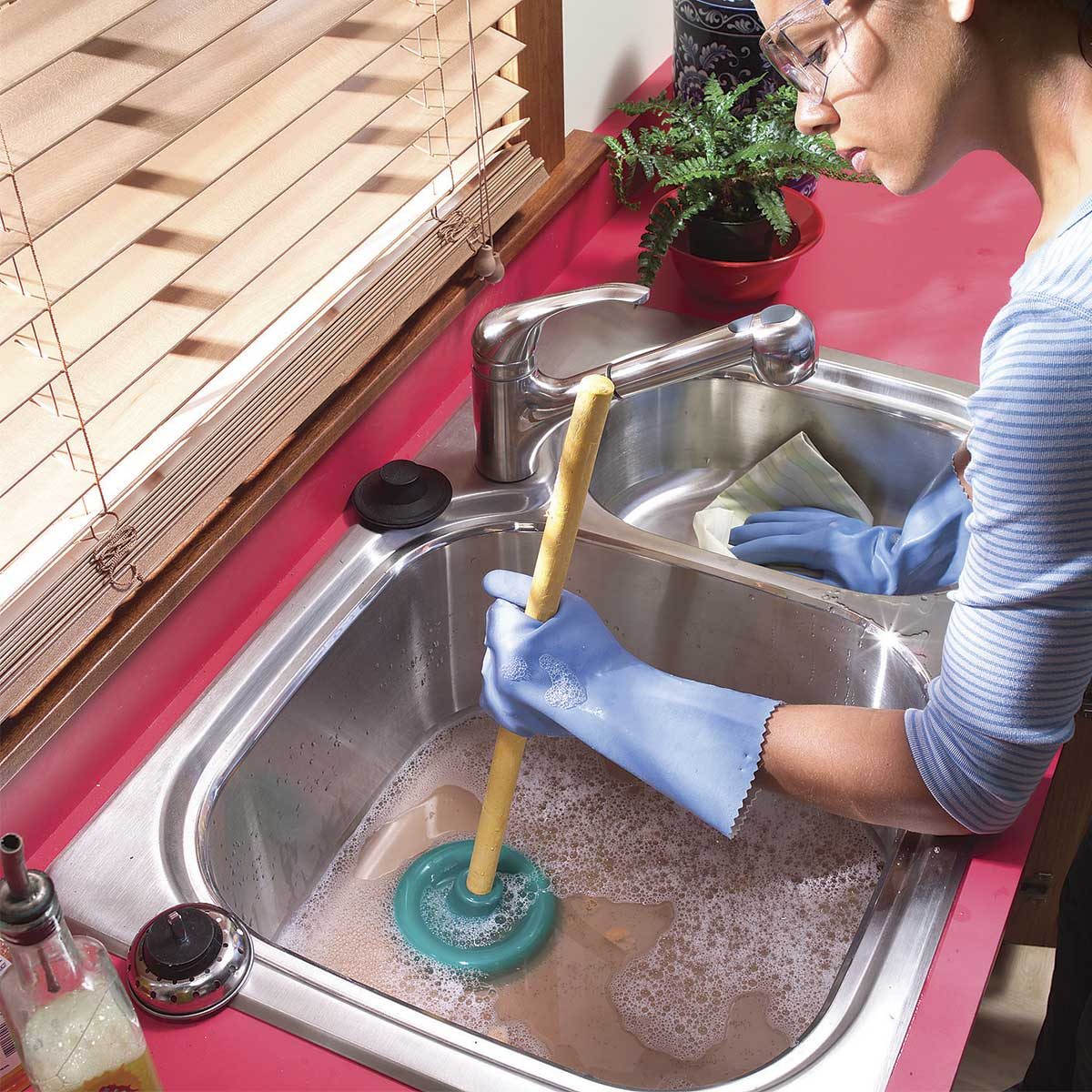Drain Drama - 6 Common Causes For Your Kitchen Sink's Troubles
Drain Drama - 6 Common Causes For Your Kitchen Sink's Troubles
Blog Article
This great article down below on the subject of What To Do When Your Kitchen Sink Won’t Drain is quite intriguing. Have a go and draw your own personal final thoughts.

It's not typical for your kitchen sink to block several times in one month. If your sink blocks two times a week, there's some difficulty going on.
An obstructed cooking area drainpipe doesn't simply decrease your jobs, it deteriorates your entire plumbing system, gradually. Here are some usual routines that encourage sink clogs, and just how to avoid them.
You require correct waste disposal
Reusing waste is excellent, yet do you take note of your natural waste as well? Your cooking area ought to have 2 separate waste boxes; one for recyclable plastics and also one more for natural waste, which can end up being garden compost.
Having a marked trash bag will certainly help you as well as your family prevent tossing pasta as well as various other food remnants down the tubes. Typically, these residues absorb wetness and also become blockages.
The fault isn't from your kitchen area sink in all
Maybe the issue isn't from your cooking area sink, however the whole drainage system. In such a situation, you might notice that other sinks and also drains get obstructed every other week. You require a professional plumbing solution to repair this.
You're throwing coffee down the tubes
Made use of coffee grounds as well as coffee beans still soak up a significant amount of wetness. They might seem tiny sufficient to throw down the drainpipe, yet as time goes on they begin to swell as well as occupy more area.
Your coffee premises need to go into organic waste disposal. Whatever portion runs away (perhaps while you're washing up) will certainly be cared for throughout your monthly clean-up.
You have actually been consuming a great deal of greasy foods
Your kitchen sink may still get obstructed despite having natural waste disposal. This may be since you have a diet plan abundant in oily foods like cheeseburgers.
This oil layers the insides of pipes, making them narrower and more clog-prone.
Utilize a plunger
Your pipeline had not been dealt with effectively to begin with
If you have actually been doing none of the above, yet still obtain routine blockages in your kitchen area sink, you should call a plumber. There may be an issue with how your pipes were installed.
While your plumber arrives, look for any kind of leakages or abnormalities around your kitchen area pipes. Don't attempt to fix the pipelines yourself. This may cause an accident or a cooking area flooding.
Somebody tried to wash their hair in the kitchen sink
There's a correct time and also location for whatever. The kitchen sink is just not the appropriate location to wash your hair. Washing your hair in the cooking area sink will certainly make it block eventually unless you use a drainpipe catcher.
While a drainpipe catcher may catch a lot of the results, some strands may still survive. If you have thick hair, this might be enough to slow down your water drainage as well as eventually form an obstruction.
There's more dirt than your pipelines can manage
If you get fruits straight from a ranch, you may discover more cooking area dirt than other people that go shopping from a shopping center. You can easily repair this by cleaning up the fruits and veggies effectively before bringing them right into your home.You need correct waste disposal
My Kitchen Sink Won’t Drain - What Should I Do?
If Your Sink Has a Garbage Disposal...
Turn on the disposal. If the disposal hums and doesn’t turn, then there’s clog in the disposal unit.
Go to your circuit breaker panel, and switch off the circuit breaker to your garbage disposal.
Back in your kitchen, double-check that your garbage disposal is off by trying to turn it on. The disposal should not move, and it should not make any noise.
Lie down underneath your sink so that you can see and access the bottom of the disposal unit. Look for a hole that looks like the head of a hex-head bolt in the center of the unit.
Place an Allen wrench inside this hole and turn it from side to side until you feel a decrease in resistance and are able to rotate the wrench completely in a single direction. This action rotates your disposal’s blade manually.
Put the wrench aside, and press the disposal unit’s reset button or switch.
Flip your garbage disposal’s circuit breaker switch back on, and turn on the unit to see if the obstruction has cleared. If it hasn’t, repeat the steps above until the obstruction is removed.
How to Unclog a Kitchen Sink Drain
If you have a double bowl sink, seal one side of the sink with an airtight lid or a second plunger before plunging the other side. Otherwise, you won’t be able to create adequate suction.
Place the cup of the plunger completely over the drain opening.
Turn on the faucet, and let the water run until it completely covers the cup of the plunger.
Start plunging by pushing the plunger down and pulling up again in order to build up suction. Make sure that the edges of the plunger stay in contact with your sink, or else you’ll lose the suction.
If you have trouble forming a seal between your sink and plunger, add petroleum jelly to the mouth of your plunger, and try again.
Plunge about five or six times before removing the plunger to see if water starts to drain properly. In some cases, you’ll even be able to feel the clog become dislodged while you plunge because suddenly there will be much less resistance. Repeat the plunging process until the clog clears.
Once water is draining properly again, run hot water down the drain for 5 minutes to help clear away grease, grime, and debris from the clog. https://www.plumbingjoint.com/blog/2019/august/my-kitchen-sink-won-t-drain-what-should-i-do-/

My Kitchen Sink Won’t Drain - What Should I Do?
If Your Sink Has a Garbage Disposal...
How to Unclog a Kitchen Sink Drain
https://www.plumbingjoint.com/blog/2019/august/my-kitchen-sink-won-t-drain-what-should-i-do-/
As a passionate person who reads on What To Do When Your Kitchen Sink Won’t Drain, I was thinking sharing that piece of content was a good idea. Sharing is caring. One never knows, you might be doing someone a favor. Thanks so much for going through it.
Call Today
Report this page